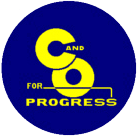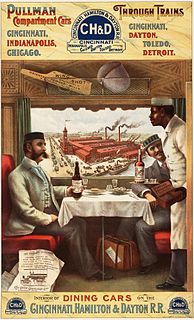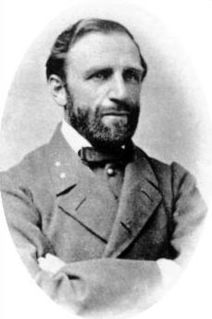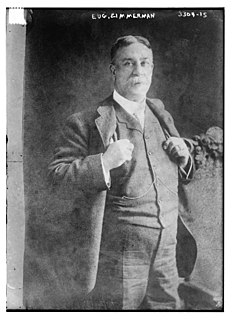
Colonel Henry Matson Waite (May 15, 1869 - September 2, 1944) was an engineer and the City Manager of Dayton, Ohio starting in 1913. [1] He was the deputy administrator for the Public Works Administration from 1933 until September 1, 1935. [2] [3]

Colonel Henry Matson Waite (May 15, 1869 - September 2, 1944) was an engineer and the City Manager of Dayton, Ohio starting in 1913. [1] He was the deputy administrator for the Public Works Administration from 1933 until September 1, 1935. [2] [3]
He was born in Toledo, Ohio on May 15, 1869 to Henry Seldon Waite. Waite was the grandson of Morrison Waite, the Chief Justice of the United States Supreme Court [4] and the great-grandson of his namesake, Connecticut judge and politician Henry Matson Waite. He graduated from Massachusetts Institute of Technology in 1890 then worked in railroad engineering and in coal mining. [5] [6] He then served as the city engineer for Cincinnati, Ohio from 1911 to 1913. He was then elected as the first city manager of Dayton, Ohio in 1913 where he served a four-year term. [7]
He died on September 2, 1944. [2]

Sidney is a city in Shelby County, Ohio, located approximately 36 mi (58 km) north of Dayton and 100 mi (161 km) south of Toledo. The population was 20,421 at the time of the 2020 census. It is named after English poet Philip Sidney and is the county seat of Shelby County. Many of the city's elementary schools are also named after famous writers, including Ralph Waldo Emerson, Henry Wadsworth Longfellow, and John Greenleaf Whittier. Sidney was the recipient of the 1964 All-America City Award. In 2009, it was the subject of the documentary film 45365.

The Chesapeake and Ohio Railway was a Class I railroad formed in 1869 in Virginia from several smaller Virginia railroads begun in the 19th century. Led by industrialist Collis P. Huntington, it reached from Virginia's capital city of Richmond to the Ohio River by 1873, where the railroad town of Huntington, West Virginia, was named for him.

The Cincinnati, Lebanon and Northern Railway (CL&N) was a local passenger and freight-carrying railroad in the southwestern part of the U.S. state of Ohio, connecting Cincinnati to Dayton via Lebanon. It was built in the late 19th century to give the town of Lebanon and Warren County better transportation facilities. The railroad was locally known as the "Highland Route", since it followed the ridge between the Little and Great Miami rivers, and was the only line not affected by floods such as the Great Dayton Flood of 1913.

John Edgar Thomson was an American civil engineer and industrialist. An entrepreneur best known for his leadership of the Pennsylvania Railroad (PRR) from 1852 until his death in 1874, Thomson made it the largest business enterprise in the world and a world-class model for technological and managerial innovation. The railroad's first Chief Engineer became its third President.

The Cincinnati, Hamilton and Dayton Railway (CH&D) was a railroad based in the U.S. state of Ohio that existed between its incorporation on March 2, 1846, and its acquisition by the Baltimore and Ohio Railroad in December 1917. It was originally chartered to build from Cincinnati to Hamilton, Ohio, and then to Dayton, a distance of 59 mi (95 km); further construction and acquisition extended the railroad, and by 1902 it owned or controlled 640 mi (1,030 km) of railroad. Its stock and bond value plunged in late 1905 after "financial mismanagement of the properties" was revealed. The company was reorganized as the Toledo and Cincinnati Railroad in 1917.

The Great Dayton Flood of 1913 resulted from flooding by the Great Miami River reaching Dayton, Ohio, and the surrounding area, causing the greatest natural disaster in Ohio history. In response, the General Assembly passed the Vonderheide Act to enable the formation of conservancy districts. The Miami Conservancy District, which included Dayton and the surrounding area, became one of the first major flood control districts in Ohio and the United States.

Carl Wilbur Condit was an American historian of urban and architectural history, a writer, professor, and teacher. He was professor at Northwestern University 1945–82. He wrote numerous books and articles on the history of American building, especially Chicago, Cincinnati, and the Port of New York. He founded the History of Science Department at Northwestern University, where he taught for over 30 years. His research specialty was the architecture of Chicago, Illinois, and he lived in Chicago most of his life, having moved there in 1945 in order to study its urban and technological development.
Samuel Diescher was a prominent Hungarian-American civil and mechanical engineer who had his career in the United States. After being educated at universities in Karlsruhe and Zurich in Europe, he immigrated to the United States in 1866 and settled in Cincinnati, Ohio. There he supervised construction of his first inclined plane. He later moved to Pittsburgh, Pennsylvania, where he worked with John Endres on the Monongahela Incline (1870), the first passenger incline in the city.
Nelson Strobridge "Bud" Talbott was an American football player and coach. He served as the head coach of the Dayton Triangles of the "Ohio League" and later a charter member of the National Football League (NFL). Talbott joined the United States Army in 1917 and served in World War I, World War II and the Korean War, rising to the rank of brigadier general. He retired as the deputy director of procurement and production at Air Materiel Command, located at Wright-Patterson Air Force Base.
Events from the year 1883 in the United States.

Edgar Maurice Cortright was a scientist and engineer, and senior official at the National Aeronautics and Space Administration (NASA) in the United States. His most prominent positions during his career were Director of NASA's Langley Research Center, and Chairman of the Apollo 13 Review Board which investigated the explosion that occurred during the Apollo 13 spaceflight in 1970.

Isaac Munroe St. John was a Confederate States Army brigadier general during the American Civil War. He was a lawyer, newspaper editor and civil engineer before the Civil War and a civil engineer after the Civil War. As a civil engineer, he worked for the Baltimore and Ohio Railroad Company and the Blue Ridge Railroad Company in South Carolina before the Civil War. After the war, he worked for the Louisville, Cincinnati and Lexington Railroad in Kentucky; the city of Louisville, Kentucky; and the Chesapeake and Ohio Railway Company.
Henry Waite may refer to:

Dayton Union Station was a railroad station serving Dayton, Ohio with daily passenger trains of several railroads. The station was located at 251 W. Sixth Street at the intersection of Ludlow Street, and it opened in 1900, replacing an earlier depot built in the mid-1850s. It was owned by the Dayton Union Railroad Co., which was owned by the Cincinnati, Hamilton and Dayton Railway, the Cleveland, Cincinnati, Chicago and St. Louis Railway, and the Pittsburgh, Cincinnati, Chicago and St. Louis Railroad. Through a series of mergers over the years, it was ultimately owned by the New York Central Railroad, Baltimore & Ohio Railroad, and Pennsylvania Railroad.

Eugene Zimmerman was an American industrialist and railroad owner. He amassed great wealth as a stockholder or shareholder in John D. Rockefeller's Standard Oil. He used the income from his Standard Oil holdings to invest in railroads.
Charles Alfred Wilson was a leading nineteenth-century American railroad engineer and civil engineer. He was born in Conowingo, Maryland. Wilson married Carrie Ione Stevens Wilson (1858-1919) in 1883 and they had one child, Hamilton Wilson.
Stephen Satterly L'Hommedieu was an American publisher and railroad executive and who served as president of the Cincinnati, Hamilton and Dayton Railroad Company.
Wang An is a Chinese engineer and business executive who was general manager and chairman of China International Engineering Consulting Corporation, and general manager of China National Coal Group. He was an academician of the Chinese Academy of Engineering.

Allen Latham Anderson was an American Brigadier General and Civil Engineer who commanded the 8th California Infantry Regiment during the American Civil War. He was also known for being the nephew of Robert Anderson and the cousin of Nicholas Longworth Anderson.
After many such meetings and a month’s careful combing of the field, the commission selected Henry M. Waite, of Cincinnati, to take up the duties which will doubtless set a new mark in the conduct of the American city. Mr. Waite is a trained engineer who has constructed and operated railroads, developed coal fields, and had big part in the actual operation of a metropolitan community. His most recent activity fits him peculiarly for the Dayton work, for he has been one of Mayor Hunt’s chief aids in the physical rehabilitation of Cincinnati under the reform era which ended all too soon. He has built streets and sewers, handled large groups of men, and built up an organization that is a model. He knows buildings and he knows business. Big of bone, deep of chest, and keen of eye, he looks as if the terrific task of blazing a whole fresh city path would be bread and meat to him. ...
Henry Matson Waite, Deputy Administrator of the Public Works ... city engineer of Cincinnati for two years, and city manager of Dayton, Ohio, for four . ...
Henry M. Waite has resigned as Deputy Administrator of Public Works effective Sept. 1.
Henry Seldon Waite. Children ... (2) Henry Matson b. May 15th 1869.
they sent for the foremost expert in this line; namely, Henry M. Waite of the Class of 1890.
Henry Matson Waite has had a many-sided engineering career. For his years after graduation from MIT, he was in railroad work and in coal mining, and in 1912 he went to Cincinnati as city engineer. Two years later Dayton appointed him ...
Dayton at midnight entered the growing ranks of the commission-governed cities and became the first large American city to intrust its business affairs to a City Manager. Henry M. Waite, formerly of Cincinnati, where he served as Service Director, and before that was an active figure in railroad and coalfield development circles, became the first City Manager.